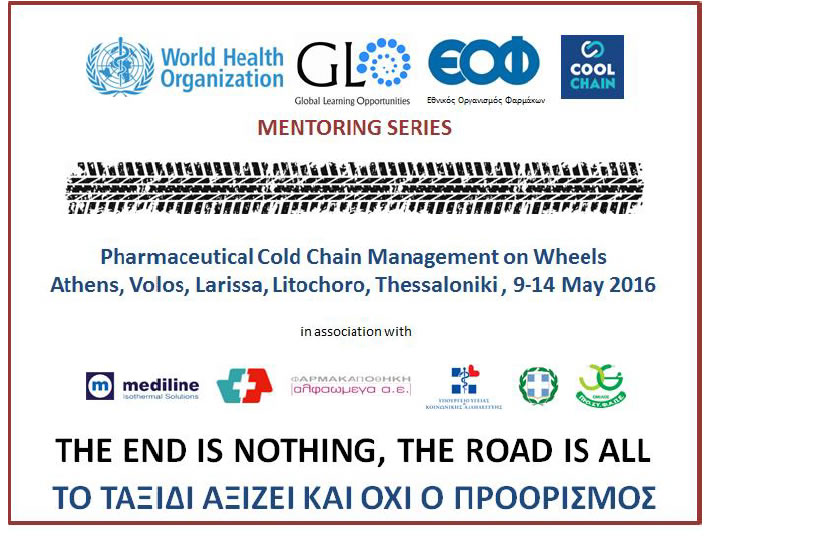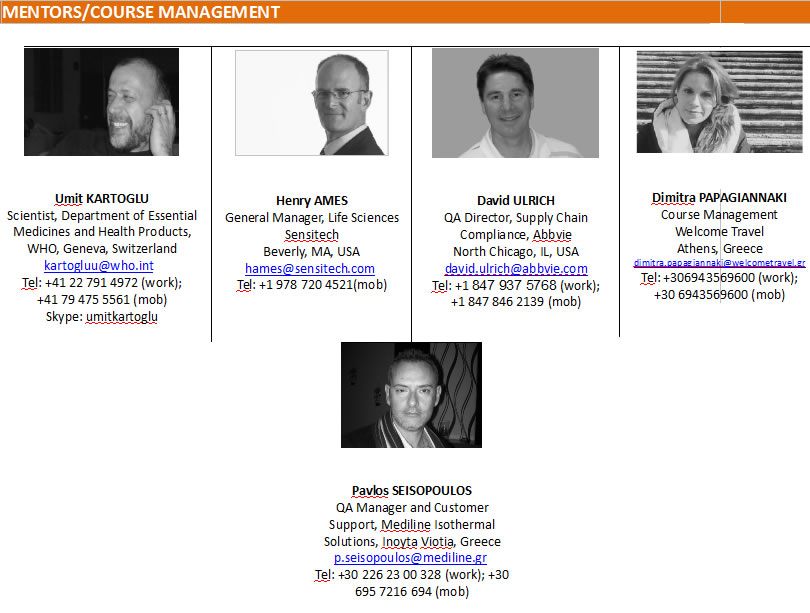
Members of the pharmaceutical supply chain are experiencing constant developments in a global scale regarding the good storage and distribution of Pharmaceutical products. World Health Organization (WHO) through its learning network GLO (Global Learning Opportunities for Vaccine Quality) and in collaboration with the Cool Chain Organization (CCO), co-organize for the second time in Greece the Pharmaceutical Cold Chain Management on Wheels (PCCMoW).
This learning event provides to key players of the pharmaceutical cold chain an opportunity to gain insights into complete cold chain operation and oversight from product manufacture (or arrival in a country) to the product’s administration to the patient. This is done by bringing together a group of participants from the national regulatory authorities and pharmaceutical, biopharmaceutical, vaccine industry involved in the supply, packaging, distribution, logistics and cold chain management areas as well as industry members of immunization related equipment and device manufacturers.
It is a course that helps learners to develop their knowledge and skills enabling them to critically evaluate a pharmaceutical cold chain system and improve their associated supervisory skills. The course encourages participants to make direct observations at the storage, warehousing, distribution and health care facilities that they visit as they physically travel with mentors by bus down the length of the cold chain. This approach is designed to show participants how the theoretical background of pharmaceutical cold chain management is applied in a variety of storage, distribution, and health care facilities. It is a practical application of experiential learning theory.
OBJECTIVES
By the end of the 6-day event, the participants will be able to:
– Identify the major operational components in a pharmaceutical cold chain
– Identify deficiencies in given situations using the “good distribution practice” (GDP) guidelines
– Illustrate the inputs, activities, and outputs of each operational component of a pharmaceutical cold chain
– Develop a quality agreement that is appropriate to a given situation
– Given a cold storage facility, assess and control the risks to pharma, biopharma, and vaccine products consistent with GDP and “good storage practice” (GSP) guidelines
– Given a mode of transportation, assess and control the risks to pharma, biopharma, and vaccine products consistent with GDP
– Given a mode of distribution in the “last mile”, assess and control the risks to pharma, biopharma, and vaccine products consistent with GDP
– Given a situation, select the appropriate methods and materials for packaging and shipping cold chain products to minimize risk
– Given a situation, select the appropriate methods and materials to monitor temperature and/or humidity for cold chain products to obtain necessary data for making decisions
– Given a specific temperature monitoring strategy, assess and control the risks to pharma, biopharma, and vaccine products consistent with GDP/GSP
– Examine and assess documents and records that support a cold-chain process consistent with GDP/GSP
– Identify work practices that contribute or reduce risks to a cold-chain worker’s health and safety
– Conduct the shake test to identify whether a given freeze-sensitive vaccine has been affected by freezing



